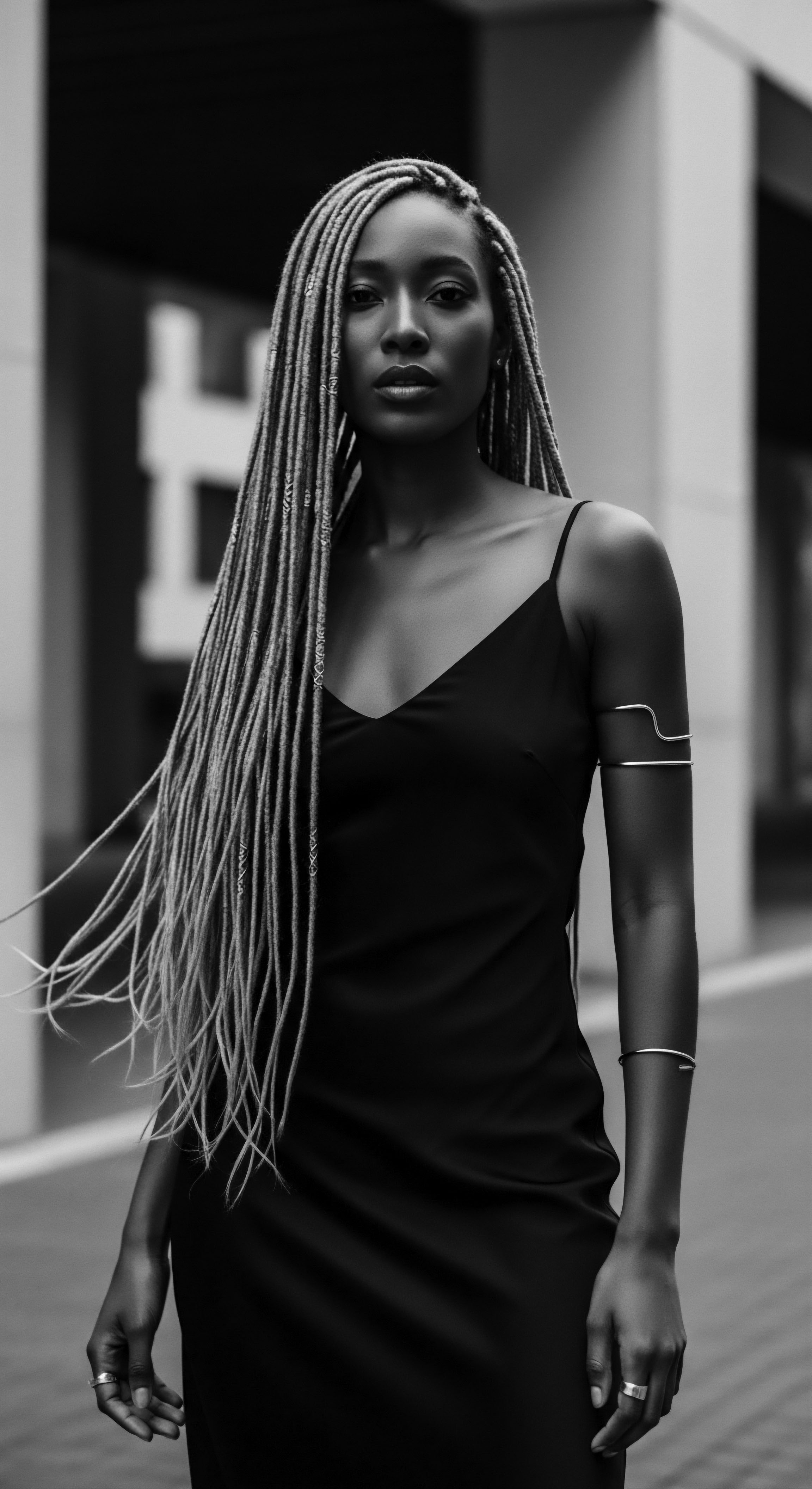
Fundamentals
The physical manifestation of hair, its measured span from root to tip, holds a deeper resonance than a mere quantitative observation. Within Roothea’s understanding, Hair Length is not simply a measurement; it is a living chronicle, a tangible expression of vitality, and a silent narrator of ancestral journeys. For textured hair, particularly within Black and mixed-race communities, this dimension carries a weight of history, a whisper of traditions, and a testament to enduring resilience.
Consider the simple act of assessing hair’s reach. On a scientific plane, it refers to the linear extension of the keratinized protein filaments that constitute each strand, growing from the scalp’s follicles. This growth follows a biological rhythm, yet its outward display, its visible span, is profoundly influenced by the hair’s unique structural configuration.
Coils, kinks, and waves, characteristic of textured hair, compress the actual linear growth, creating an optical illusion of less span than truly exists. This phenomenon, often termed Shrinkage, is not a flaw but an inherent property, a testament to the hair’s remarkable elasticity and strength.
Hair Length, in the context of textured hair, serves as a profound link to ancestral practices and a vibrant marker of identity, extending far beyond its simple physical measurement.
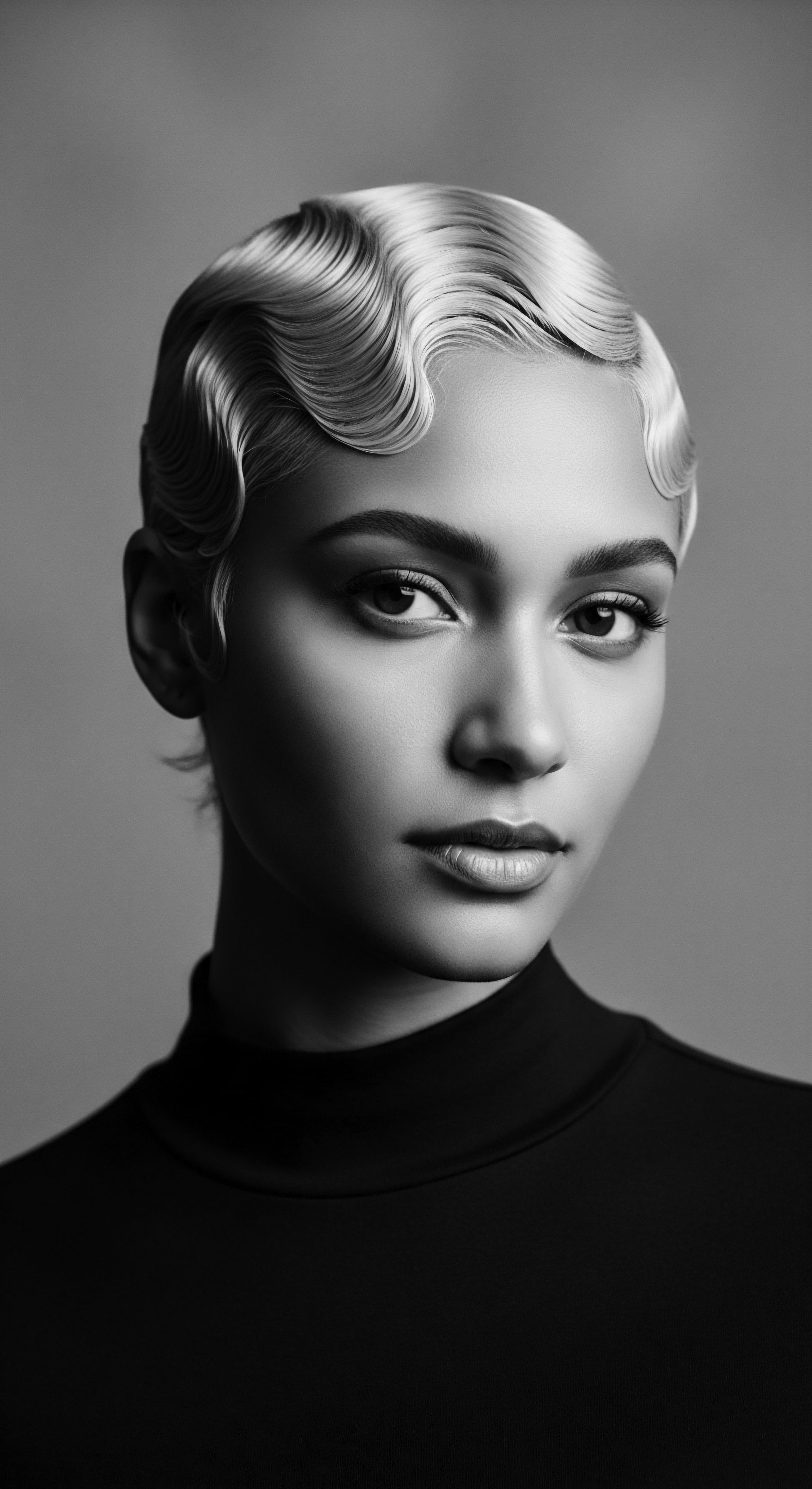
The Physical Measure, The Spiritual Mark
In its most basic sense, Hair Length refers to the linear measurement of a hair strand from its emergence from the scalp to its furthest point. This physical attribute, while seemingly straightforward, assumes layered meanings when viewed through the lens of heritage. For countless generations, the visible span of hair was not merely an indicator of biological growth but a reflection of life stages, social standing, and spiritual connection. The length a strand attained spoke of care, nourishment, and often, a blessing from the unseen realms.
- Linear Growth ❉ The actual distance a single hair strand travels from its follicular origin.
- Visible Span ❉ How long the hair appears when it rests, influenced by its texture and curl pattern.
- Perceived Length ❉ The subjective assessment of length, often shaped by societal standards and historical beauty ideals.

Shrinkage ❉ A Legacy of Coils
The inherent characteristic of textured hair to contract upon drying, known as shrinkage, means that its apparent length is often significantly shorter than its true linear span. This natural inclination for coils and curls to draw inward, forming a compact, protective halo, is a biological marvel. Ancestral communities, long before modern scientific terms, understood this quality not as a hindrance but as an intrinsic part of the hair’s vitality and its capacity for diverse styling.
The spring and bounce of tightly coiled strands allowed for styles that defied gravity, creating voluminous expressions that were deeply symbolic. This natural contraction safeguarded the delicate ends, minimizing exposure and breakage, thus contributing to the hair’s overall health and longevity.
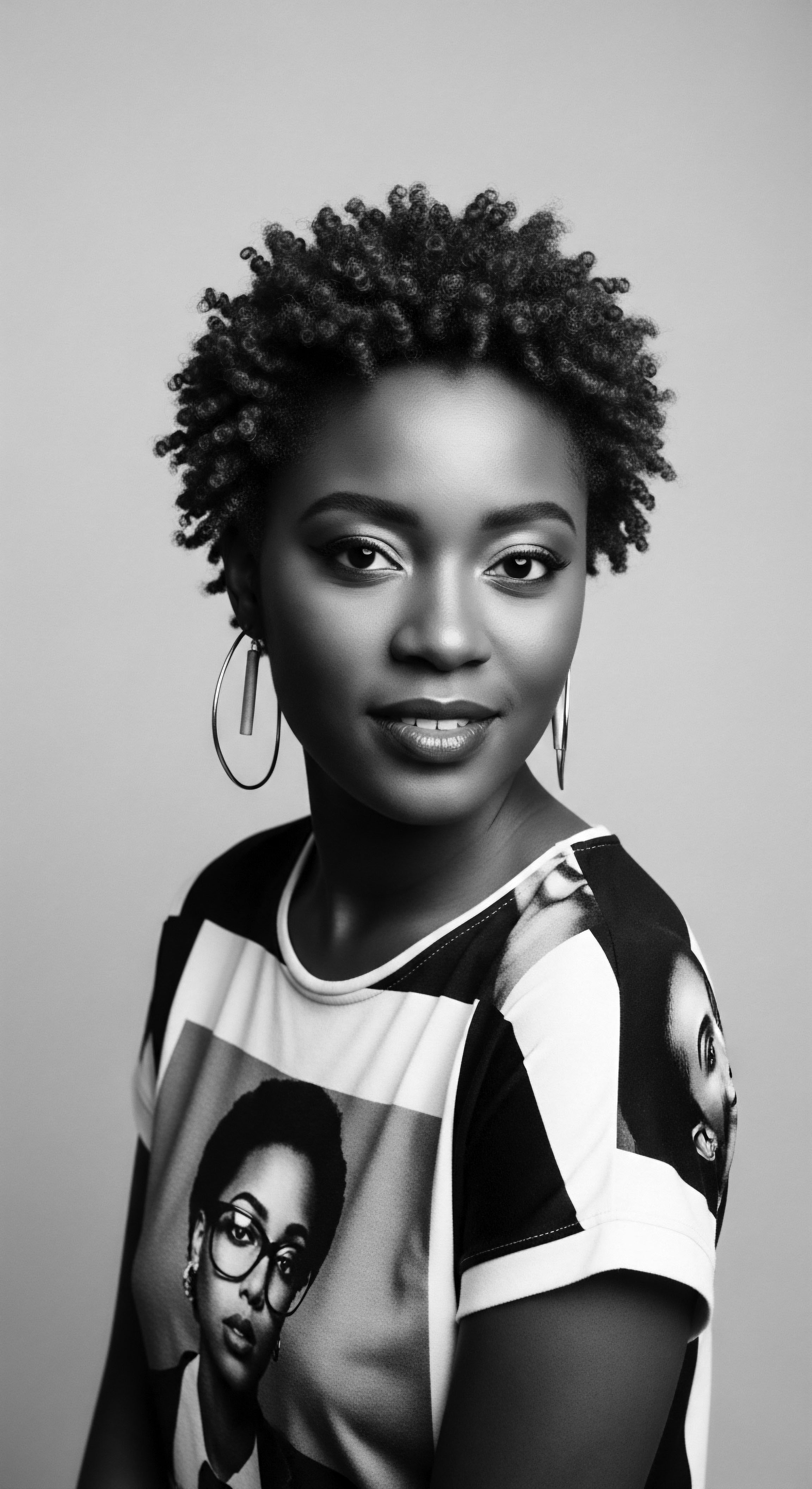
Early Stewardship of Length
Long before the advent of contemporary hair care products, communities across Africa developed sophisticated rituals and practices centered on nurturing hair length. These methods, often passed down through generations, were rooted in an intimate understanding of the hair’s needs and its spiritual significance. The application of natural butters, rich oils extracted from indigenous plants, and herbal rinses served not only to moisturize and protect but also to encourage the retention of length by minimizing damage.
These practices were communal affairs, particularly among women, transforming hair care into a shared experience of bonding and cultural transmission. The time spent in these rituals was a sacred investment, preserving not only the physical integrity of the hair but also the intangible heritage of care and connection.
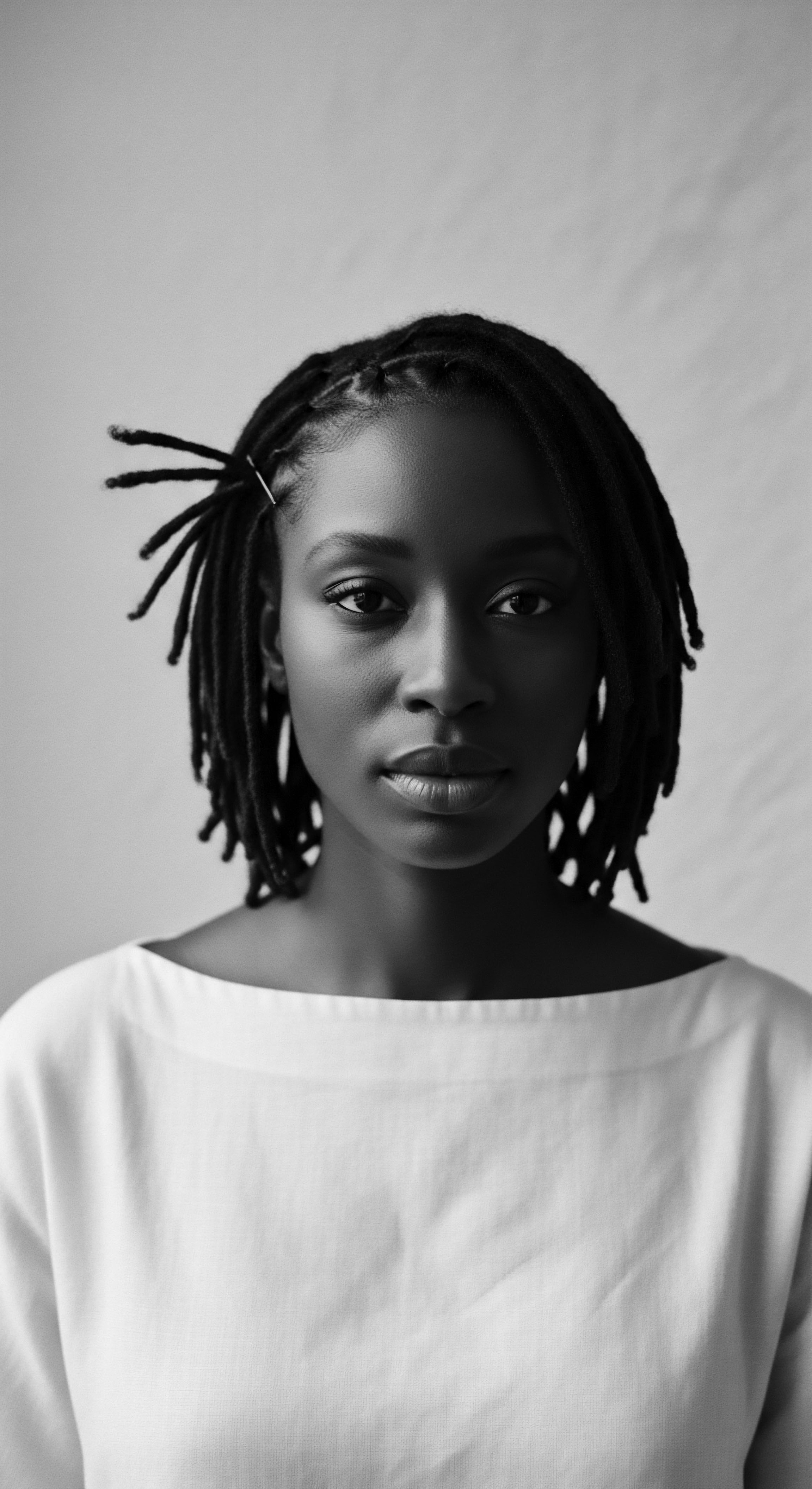
Intermediate
Moving beyond the foundational understanding, the intermediate examination of Hair Length delves into its deeper biological underpinnings and the rich tapestry of cultural practices that have historically honored and manipulated this dimension, particularly within the lineage of textured hair. This perspective considers how inherent physiological processes intersect with communal wisdom, shaping the meaning and maintenance of hair’s span. The comprehension of hair length extends to acknowledging its dynamic interplay with health, environmental elements, and the collective memory of care passed down through time.
The pursuit of hair length, while sometimes influenced by external beauty standards, also reflects an ancestral recognition of hair as a living extension of self. It is a chronicle of the individual’s journey, a repository of familial history, and a silent witness to cultural narratives. Understanding the factors that genuinely support the achievement of desired hair length requires a discerning eye, distinguishing between superficial appearances and genuine well-being, a lesson echoed in the wisdom of ancient hair traditions.
Hair Length is a dynamic expression, reflecting not only biological rhythms but also the profound cultural ingenuity and resilience embedded within ancestral care practices for textured hair.

The Biological Cadence of Growth
Hair growth is a cyclical process, occurring in three main phases ❉ Anagen (growth), Catagen (transition), and Telogen (resting). The duration of the anagen phase primarily dictates the maximum length a hair strand can attain. For individuals with textured hair, this growth cycle is similar to other hair types, yet the visible manifestation of length can differ considerably due to the helical structure of the strand. The tight coiling means that even substantial linear growth may appear modest when the hair is in its natural state.
Factors such as genetics, nutrition, and overall health profoundly influence the anagen phase’s duration. A diet rich in essential nutrients, adequate hydration, and minimal stress contribute to a healthier growth environment, supporting the hair’s potential to achieve its genetically determined length. This scientific understanding often aligns with ancestral dietary wisdom, which emphasized whole, natural foods for overall vitality.
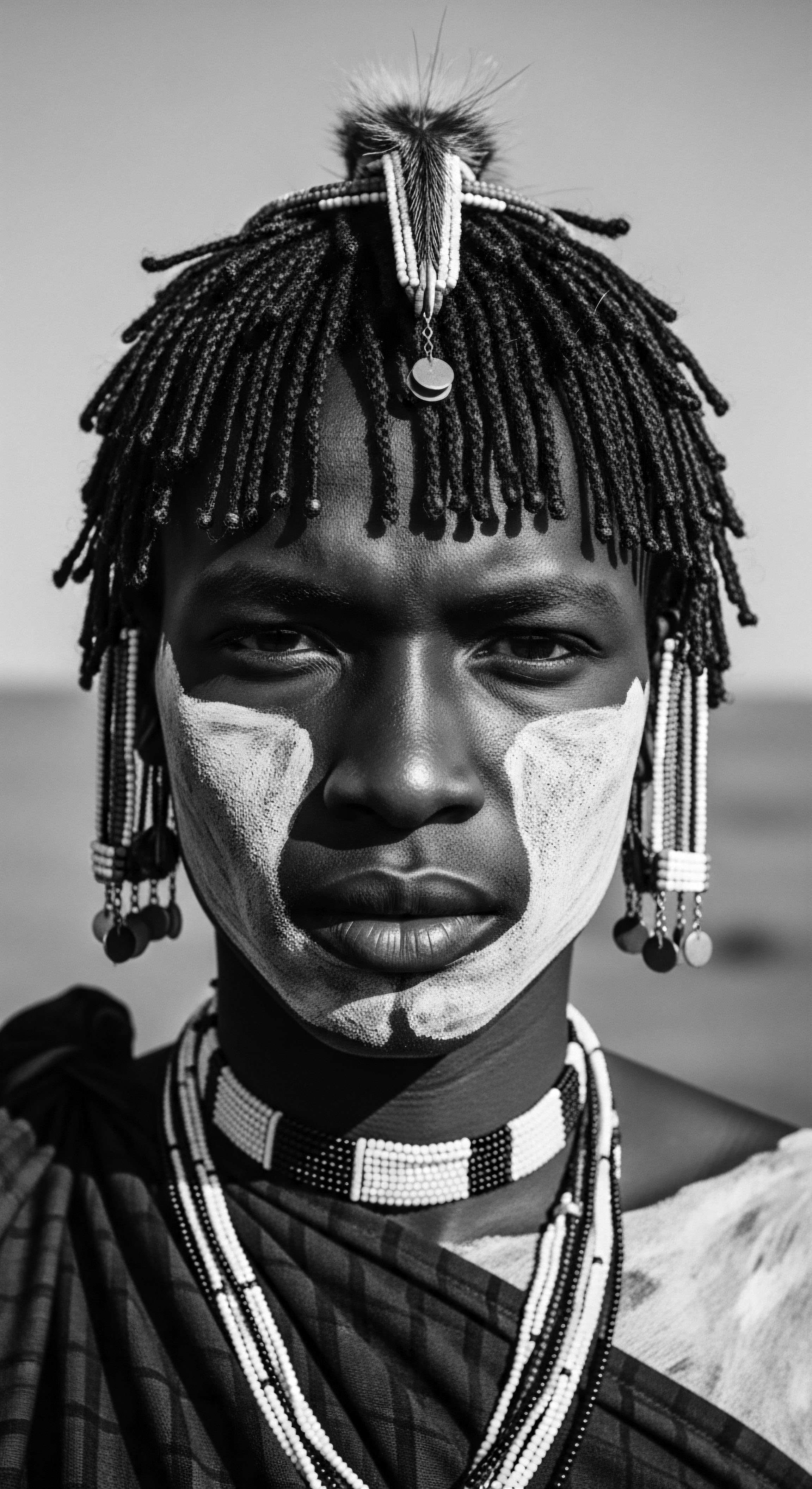
Ancestral Alchemy for Length Retention
While modern science dissects the cellular mechanisms of hair growth, ancestral wisdom, through generations of observation and practice, developed effective strategies for length retention. These were not about accelerating growth beyond its natural pace but about preserving the hair that had already grown, minimizing breakage, and protecting delicate ends.
Traditional practices for encouraging hair to reach its full potential often centered on gentle handling and protective styling.
- Scalp Stimulation ❉ Regular, gentle massage with natural oils, such as shea butter or castor oil, was common. This practice was believed to stimulate circulation to the hair follicles, providing a nourishing environment for growth.
- Protective Styling ❉ Styles like Braids, Twists, and Bantu Knots were not only expressions of social status and tribal identity but also highly functional. They kept the hair tucked away, reducing exposure to environmental stressors and minimizing manipulation, which significantly decreased breakage and allowed length to accumulate. These styles could be worn for extended periods, further safeguarding the hair.
- Natural Ingredients ❉ The application of indigenous herbs, clays, and plant-derived oils provided deep conditioning and strength. Ingredients like aloe vera, hibiscus, and various botanical extracts were used in rinses and masks, contributing to the hair’s elasticity and resilience, thereby preventing premature breakage.
These methods, honed over centuries, demonstrate a sophisticated understanding of hair care that prioritized longevity and health, allowing textured hair to flourish and display its inherent span.

Length as a Cultural Dialect
The meaning of Hair Length in textured hair communities extends far beyond the physical. It functions as a powerful cultural dialect, conveying nuanced messages about identity, social standing, and personal journeys. In pre-colonial African societies, the length and elaborate styling of hair were integral to expressing a person’s identity, including their age, marital status, tribal affiliation, wealth, and spiritual beliefs. For instance, certain intricate braiding techniques among the Yoruba and Fulani peoples of West Africa required hours of skilled labor, making hairstyling a significant communal bonding ritual and a visual marker of social roles.
During periods of mourning, women might neglect their hair or adopt subdued styles, signaling their emotional state to the community. The Himba tribe of Namibia, for example, uses hair length and styling to indicate age, life stage, and marital status, with young girls wearing braids that hang over their faces as a sign of puberty, and married women adopting specific headdresses. These practices reveal a deep cultural understanding where hair length was not just an aesthetic choice but a communicative tool, a living record of an individual’s place within the collective.
| Cultural Group/Region Yoruba (West Africa) |
| Hair Length/Style Significance Intricate braids and coiffures indicated social status, marital status, or specific ceremonies. |
| Associated Practices Hairstyling as a communal bonding ritual, requiring hours of skilled labor. |
| Cultural Group/Region Fulani (West Africa) |
| Hair Length/Style Significance Long, thin, woven braids adorned with beads and cowrie shells, displaying wealth and familial connections. |
| Associated Practices Young girls attaching family silver coins and amber to their braids as heritage symbols. |
| Cultural Group/Region Himba (Namibia) |
| Hair Length/Style Significance Specific dreadlock styles and headdresses signified age, life stage, and marital status. |
| Associated Practices Girls at puberty wearing face-covering braids; married women wearing Erembe headdresses. |
| Cultural Group/Region Various Pre-colonial African Societies |
| Hair Length/Style Significance Thick, long, neat hair symbolized health, strength, and fertility. |
| Associated Practices Mourning periods marked by neglected or subdued hair; hair believed to aid divine communication. |
| Cultural Group/Region These examples underscore the profound cultural value placed on Hair Length and its styling as a living expression of identity and communal belonging across diverse African traditions. |
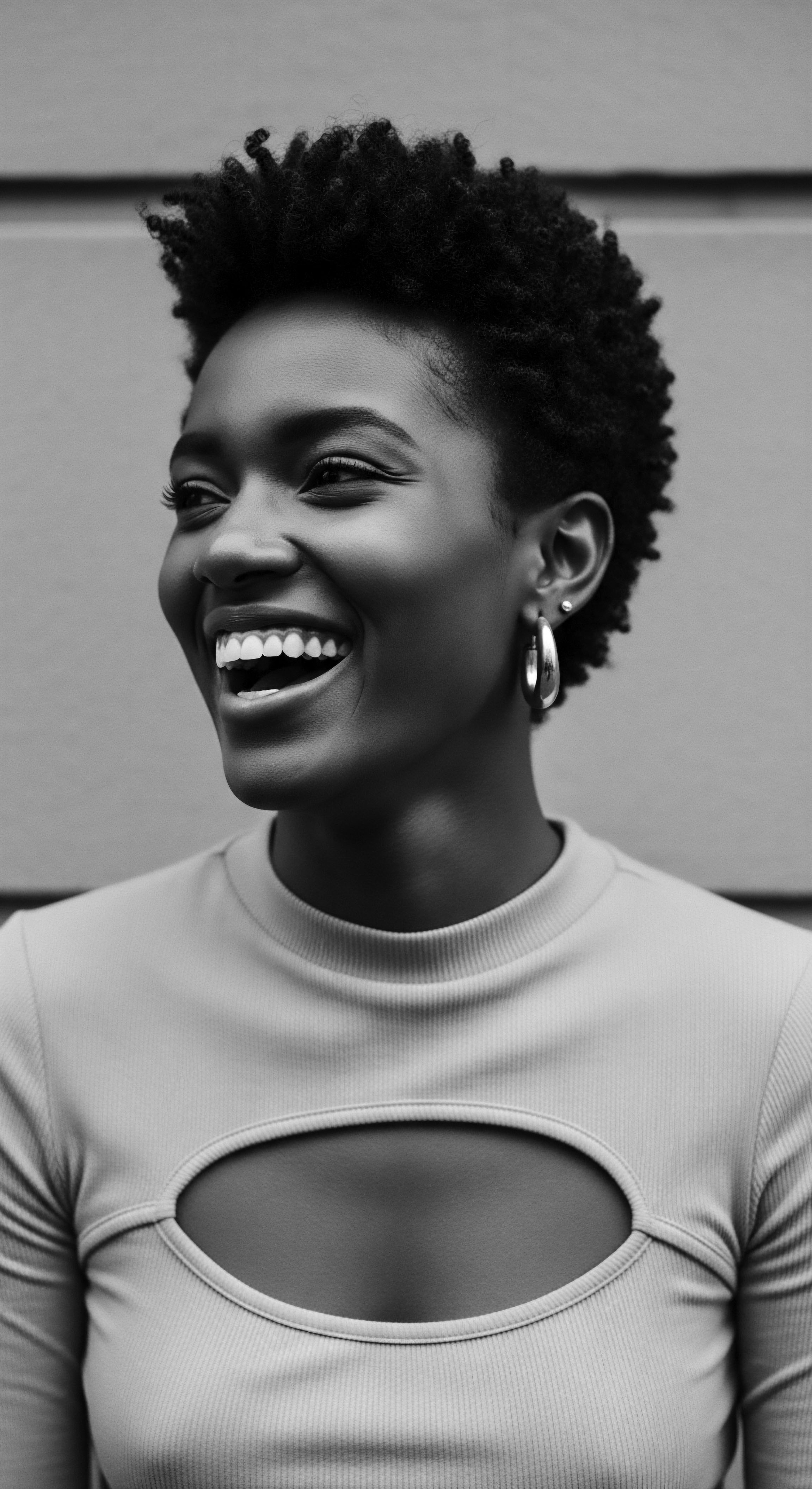
Academic
The academic delineation of Hair Length extends beyond simple physical measurement, encompassing its intricate biological architecture, its profound socio-cultural meaning, and its historical role as a site of identity, oppression, and resistance within human populations, particularly those of African descent. It represents a complex interplay of genetic predisposition, environmental interactions, and the deeply embedded cultural constructs that shape human perception and interaction with this keratinous appendage. From a scholarly standpoint, Hair Length is not a static attribute but a dynamic variable, imbued with shifting connotations across epochs and geographies, serving as a powerful lens through which to examine societal power structures and the resilience of marginalized communities. Its interpretation requires a multidisciplinary approach, drawing insights from trichology, anthropology, sociology, and critical race theory to truly comprehend its layered significance.
The meaning of hair length, when viewed through an academic prism, is a statement of biology and a declaration of belonging, a silent language spoken through centuries of cultural practice. It is a tangible link to ancestral narratives, a physical manifestation of heritage that defies simplistic categorization. The exploration of its implications for textured hair communities reveals not just a scientific understanding of growth patterns, but a deep inquiry into how these patterns have been perceived, celebrated, or denigrated across diverse historical and social landscapes.
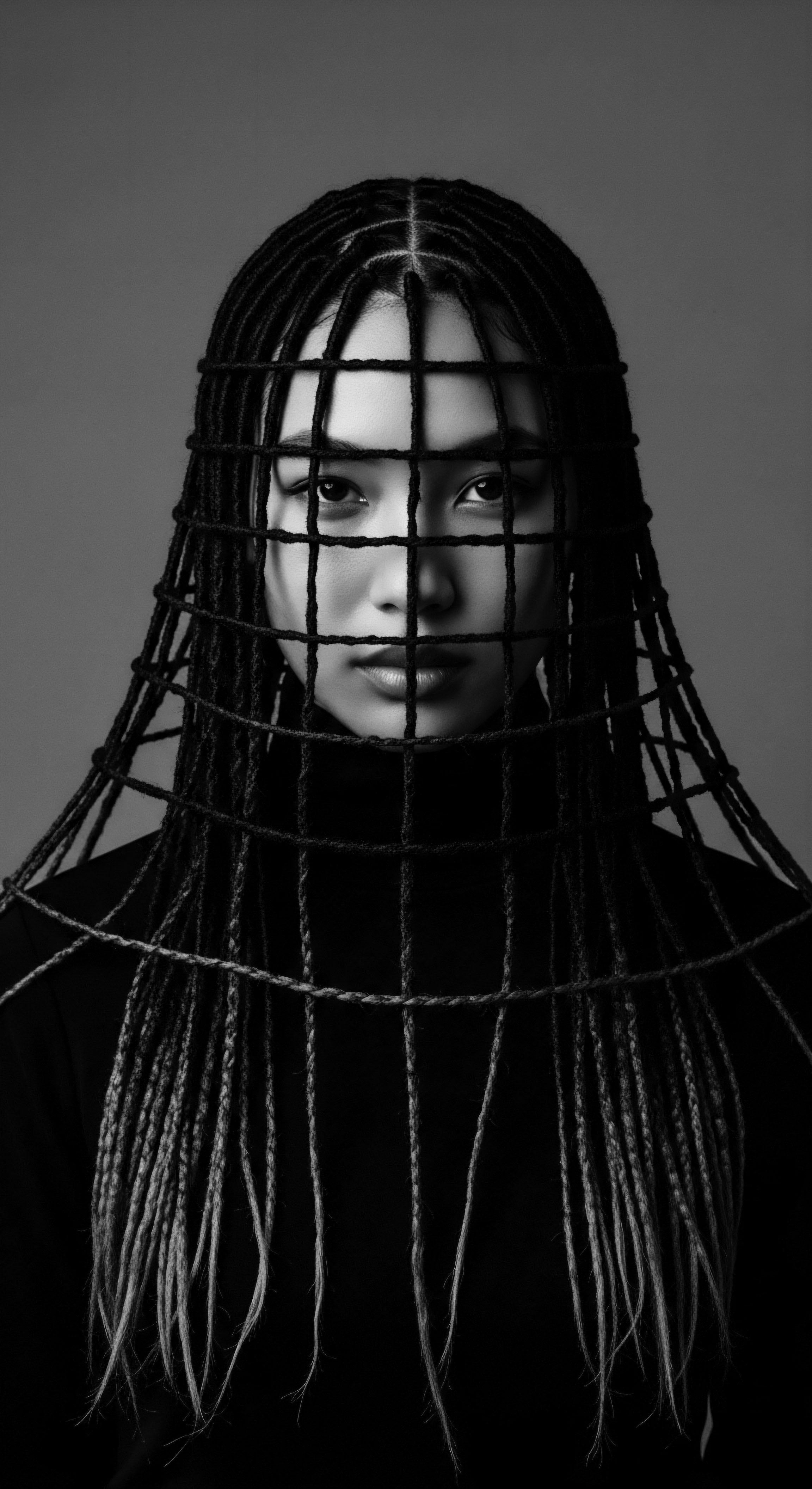
A Delineation of Length ❉ Beyond the Metric
From a biological standpoint, hair length is fundamentally determined by the duration of the Anagen Phase, the active growth period of the hair follicle. This phase can span from two to seven years, with individual variations significantly influenced by genetic factors. The rate of growth, typically around 0.5 inches per month, translates into a potential maximum length, yet this potential is rarely realized in its entirety due to breakage, environmental stressors, and styling practices. For textured hair, the inherent helical structure, ranging from loose waves to tightly coiled patterns, results in a phenomenon known as Curl Compression or shrinkage.
This optical reduction in length means that a strand of tightly coiled hair, if stretched straight, would reveal a considerably greater linear measurement than its apparent length in its natural state. This distinction between actual linear length and visible length is a critical concept in understanding textured hair, influencing product efficacy, styling choices, and personal perceptions of growth.
Beyond biology, the interpretation of hair length is profoundly shaped by cultural and social contexts. In numerous pre-colonial African societies, hair length, along with its texture and style, conveyed intricate social information. It signaled a person’s age, marital status, spiritual beliefs, social rank, and even tribal affiliation. Long, thick hair was often revered as a symbol of vitality, fertility, and strength, reflecting a person’s overall well-being and connection to the divine.
This symbolic weight meant that the attainment and maintenance of length were not merely aesthetic pursuits but acts imbued with communal significance and spiritual reverence. The communal rituals of hair styling, often taking hours, were not just about physical grooming but about reinforcing social bonds and transmitting ancestral knowledge.
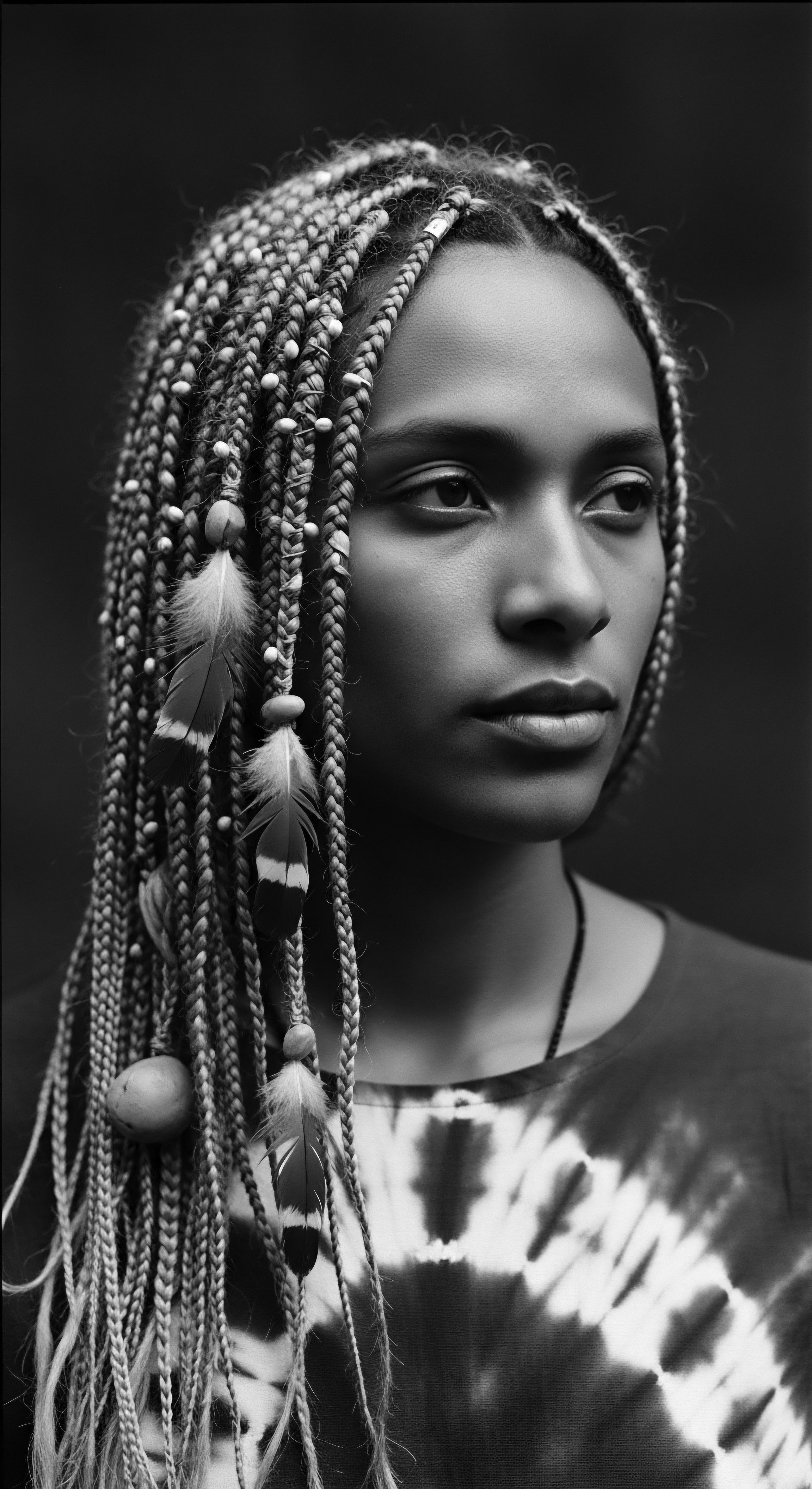
The Silent Chronicle ❉ Hair Length in Resistance and Identity
The journey of hair length within the Black diaspora offers a compelling case study of cultural resilience against systemic oppression. During the transatlantic slave trade, one of the first acts of dehumanization inflicted upon enslaved Africans was the forced shaving of their heads. This brutal act was a deliberate attempt to strip individuals of their identity, sever their connection to ancestral heritage, and erase the intricate social meanings embedded in their traditional hairstyles and their associated lengths. Despite this profound rupture, the significance of hair, including its length, persisted as a quiet act of defiance and a marker of identity.
Even in the face of brutal conditions, enslaved people found ways to maintain hair traditions, often utilizing protective styles that inadvertently aided length retention under harsh circumstances. Cornrows, for instance, were not only practical for managing hair during long workdays but were also ingeniously used to hide rice seeds for survival during travel and to create maps for escape routes, demonstrating an extraordinary adaptation of hair styling for both physical and cultural preservation. This historical continuity, even in the shadows of oppression, underscores the deep-seated value placed on hair and its span as a link to an enduring past.
The societal perception of hair length, particularly for Black women, remains a complex and often discriminatory terrain. A significant contemporary statistic powerfully illuminates this ongoing struggle ❉ the 2023 CROWN Workplace Research Study, co-commissioned by Dove and LinkedIn, revealed that Black Women’s Hair was 2.5 Times More Likely to Be Perceived as Unprofessional. This striking disparity often leads to direct professional consequences, with more than 20% of Black women aged 25-34 having been sent home from work because of their hair. This systemic bias is deeply rooted in Eurocentric beauty standards that historically equated “good hair” with straightness and often, implicitly, with visible length unhindered by the natural contraction of coils.
The expectation for Black women to alter their hair, often through chemical straightening or heat styling, to conform to these norms is a direct assault on their natural hair length and texture, representing a modern iteration of the historical attempts to erase Black identity through hair control. The CROWN Act, a legislative movement, seeks to counteract this discrimination by legally prohibiting bias based on hair texture and styles associated with racial identity, recognizing hair length and style as fundamental aspects of cultural expression.

Societal Echoes ❉ Length, Perception, and Power
The societal implications of hair length extend into realms of perception and power. The historical imposition of Eurocentric beauty ideals, which often privilege long, straight hair, has created a dichotomy where the natural appearance of textured hair, with its inherent shrinkage, is frequently devalued. This devaluation has tangible consequences, impacting educational opportunities and career advancement for individuals with Black and mixed-race hair. School policies that ban culturally significant hairstyles, often citing “neatness” or “professionalism,” effectively deny students educational access and reinforce harmful stereotypes about hair length and presentation.
The “natural hair movement” of the late 20th and early 21st centuries represents a powerful reclamation of hair length and texture as symbols of pride and resistance. Figures like Angela Davis, with her iconic afro, transformed hair length into a statement of political defiance and self-love. This movement, significantly amplified by digital platforms, created spaces for Black women to celebrate their natural hair, including its unique length characteristics, and to share knowledge about healthy care practices that honor their hair’s authentic state. Yet, even within this movement, a lingering emphasis on achieving visible length can sometimes inadvertently perpetuate the very Eurocentric ideals it seeks to dismantle, highlighting the persistent societal pressures that frame hair length as a measure of success or beauty.
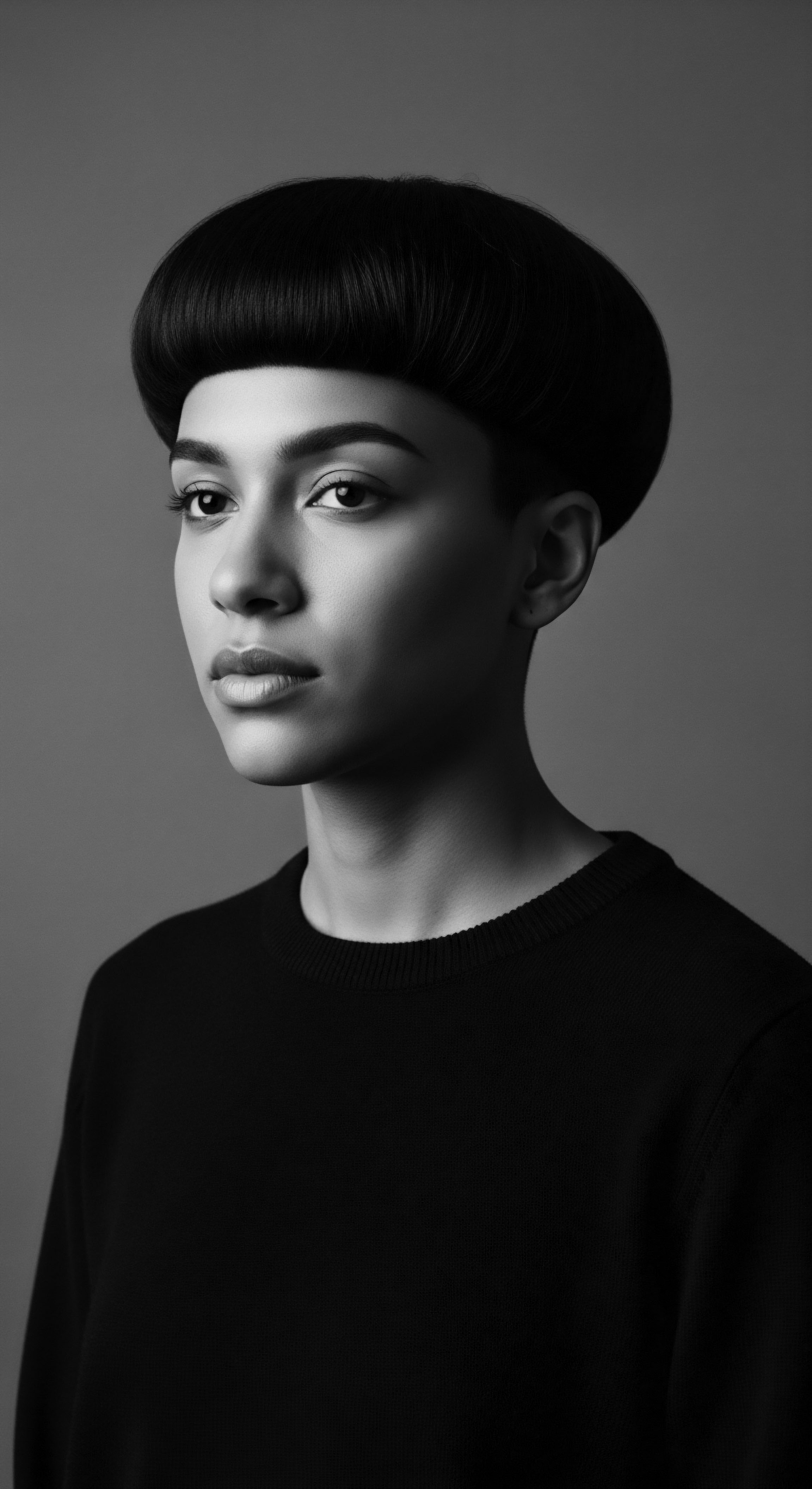
The Economic Thread ❉ Commerce and Care
The perception and pursuit of hair length also possess a significant economic dimension. The beauty industry, historically, has capitalized on and perpetuated Eurocentric beauty standards, offering a vast array of products and services designed to alter textured hair to appear longer and straighter. This has generated a multi-billion dollar industry centered on relaxers, extensions, and heat styling tools, often at the expense of hair health and cultural authenticity. However, a counter-economy has steadily grown, driven by the natural hair movement.
This segment focuses on products that support natural hair length retention, moisture, and health, including specialized oils, butters, and styling tools designed for textured hair. This economic shift reflects a growing collective consciousness, prioritizing culturally relevant care over assimilationist practices. The rise of Black-owned hair care businesses, deeply rooted in ancestral knowledge and a genuine understanding of textured hair needs, signifies a powerful re-direction of resources towards community well-being and the celebration of authentic hair length and texture.
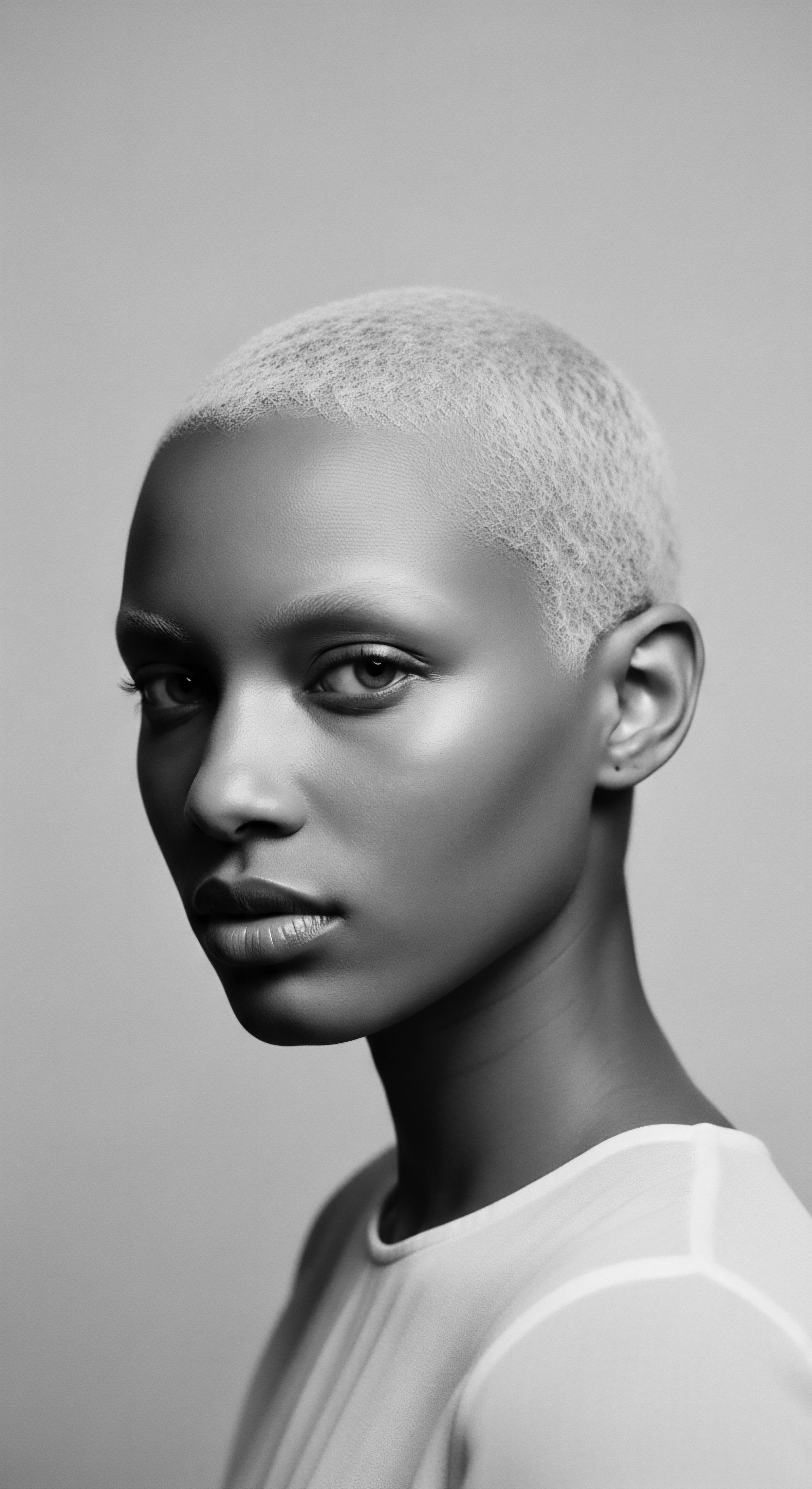
Reflection on the Heritage of Hair Length
The exploration of Hair Length, from its elemental biology to its profound cultural resonance, culminates in a reflection on its enduring heritage within the living library of Roothea. It is clear that the span of a strand is never merely a measure; it is a whisper from ancient times, a declaration of identity in the present, and a guiding light for future generations. The journey of textured hair, often marked by both reverence and resistance, illuminates the extraordinary capacity of communities to preserve wisdom and redefine beauty on their own terms.
The coils and kinks, the waves and spirals, each contribute to a visual narrative of length that defies conventional metrics, inviting a deeper appreciation for inherent beauty and resilience. This profound connection to ancestral practices, from the communal braiding rituals of West Africa to the meticulous care passed down through families, serves as a powerful reminder that true hair wellness extends beyond superficial appearance. It is an acknowledgment of a legacy, a continuity of care that honors the unique story held within each strand.
As we gaze upon the varied expressions of hair length today, we observe the echoes of forebears who understood hair as a sacred antenna, connecting them to the divine and to their lineage. The current movement to celebrate natural hair length and texture is not a fleeting trend; it is a profound act of reclamation, a conscious return to a heritage that recognizes the inherent beauty and strength of every coil. This journey of understanding and self-acceptance, rooted in ancestral wisdom, shapes a future where the meaning of hair length is defined by its authenticity, its health, and its unwavering connection to the Soul of a Strand.

References
- Boone, S. A. (1986). Radiance from the soul ❉ The Mende of Sierra Leone. L. Kahan Gallery.
- Dove and LinkedIn. (2023). CROWN Workplace Research Study.
- Ezatolahi Nejad, T. & Rahbarria, Z. (2015). Sounds Hair ❉ Anthropology of The Indigenous Aesthetic in self-decoration Turkmen village woman Doydokh. International Journal of Anthropology and Archaeology, 3(1), 18-26.
- Frost, P. (2015). Evolution of Long Head Hair in Humans. Open Journal of Social Sciences, 3(11), 189-197.
- Gordon, M. (2018). Hair Story ❉ Untangling the Roots of Black Hair in America. St. Martin’s Press.
- Locke, K. (2022). The CROWN Act ❉ A Legal and Social Movement. University of California Press.
- Tharps, L. M. & Byrd, A. D. (2001). Hair Story ❉ Untangling the Roots of Black Hair in America. St. Martin’s Press.
- White, S. & White, S. (1995). Slave Narratives ❉ A Folk History of Slavery in the United States From Interviews with Former Slaves, Typewritten Records Prepared by the Federal Writers’ Project, 1936-1938, As Assembled by the Library of Congress Project, 1941. Library of Congress.
